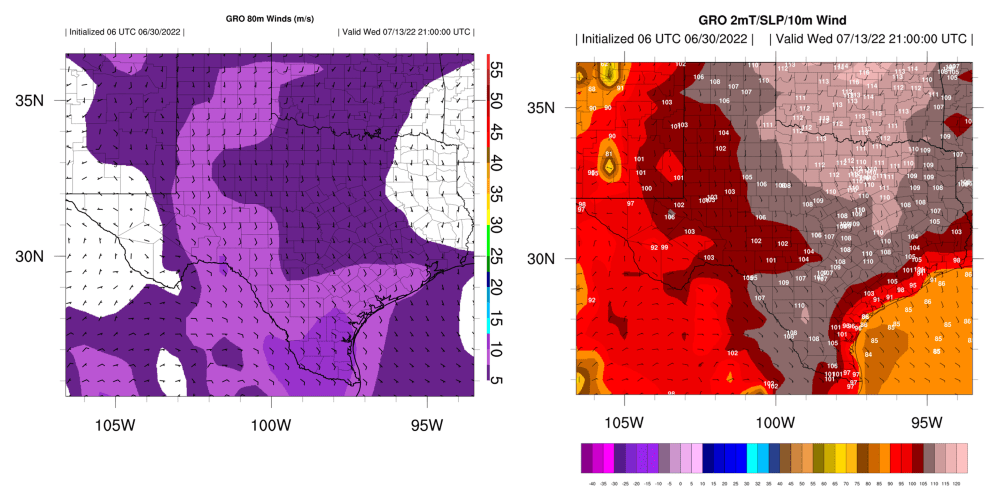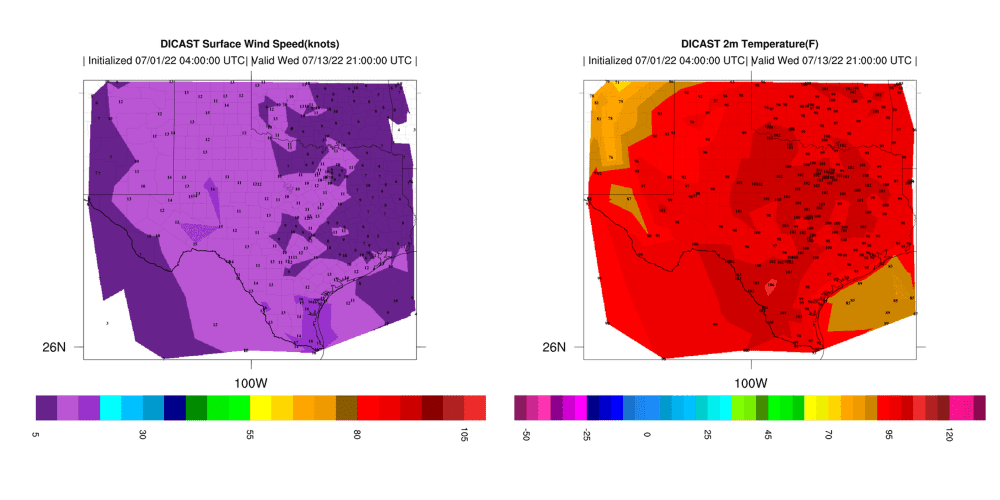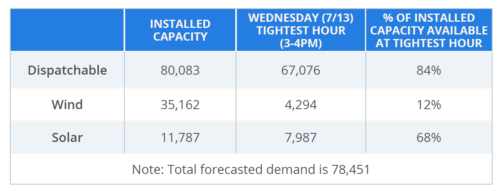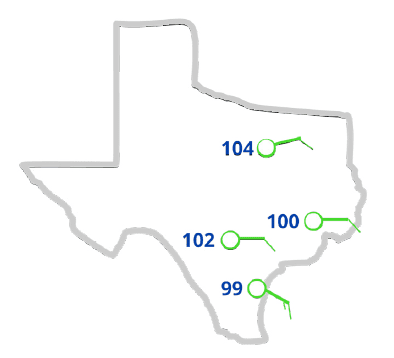
CASE STUDY | JULY 13, 2022
ERCOT Hit With Triple Digit Heat & Lack of Wind.
Climavision GRO Model and Point Forecast System nails a crisis climate combination guaranteed to put any power grid to the test.
The Situation: Major Energy Supplier Gets Hit with Unexpected weather conditions
On July 13th, 2022, ERCOT faced public discomfort and profit loss as energy demand came close to exceeding supply. During an interview the interim CEO of ERCOT expressed a need for better weather intelligence in a very important interview. With triple digit temperatures combined with a lack of wind to power wind farm turbines, Mr. Jones issued an appeal to Texans and businesses to reduce their air conditioning usage to conserve power as much as possible from the hours of 2-8 PM to avoid the catastrophic failure of the Texas power grid.

GRO
Climavision’s GRO model held steady in forecasting triple digit heat and weak winds for the afternoon of July 13th as early as June 30th – a full two weeks in advance. This consistency is key in developing confidence among meteorologists and decision makers that the forecast at hand will truly playout. As meteorologists analyze a range of models to develop their forecast, consistency in model runs and agreement between models indicates a strong likelihood of an accurate forecast.
Figures 1 & 2: GRO consistently forecasted for 80m winds under 15 knots and triple digit heat since June 30th.
Point Forecast
The same goes for Climavision’s Point Forecasting System. Triple digit heat and lack of wind was evident for days leading up to July 13th. While the PFS provides a surface wind speed forecast, confidence could be found through the indication of calm conditions for the afternoon hours.
Figures 4 & 5: Point forecast for surface winds and temperature initialized July 1st.

ERCOT Data
As shown in the graphic for July 13th, only 12% of ERCOT’s wind energy would be available from 3-4 PM. The percentage of installed capacity available across dispatchable, wind, and solar sources was at 79,357 MW with total forecasted demand reaching 78,451 MW – a margin of available energy much too close for comfort.

Figure 6: ERCOT data from July 13th press release.

Weather Observations
Closer to the coast, Corpus Christi and Houston recorded 4 PM temperatures of 99 and 100 degrees, respectively. Dallas and San Antonio recorded highs of 104 and 102 further inland. Across all four cities, surface wind observations ranged from 7-13kt, barely meeting the threshold for wind turbines to start turning.
Figure 7: Temperature & wind data from NWS archives
Energy Costs
Real-time hourly prices exploded from June 29 hourly highs of $131/MWH to June 13 highs of over $5000/MWH in Houston, West, and North Zones reflecting both increased load demand and low intermittent generation supply.
Figure 8: Energy trading price data from June 29th – July 14th.

Key Takeaway
Had energy traders and power grid operators added Climavision’s GRO model and/or Point Forecast System to their arsenal of forecasting tools, confidence could’ve been built for traders and operators to fully expect the heat and lack of wind combination earlier on. This would have allowed them to prepare for the nearly catastrophic conditions – trade cost effectively earlier, save millions of dollars and further mitigate the threat of rolling blackouts across the seriously stressed power grid.
Would you like the Case Study like to save this case study or share it? Fill out the form below and we will email you a downloadable PDF.
